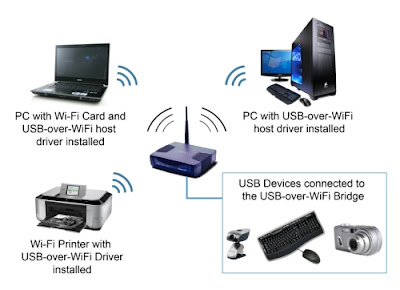And yes, it's a new new day, we're clinging on new new branch originated from last week's topic, Wireless Technology.
WHAT IS BLUETOOTH IN DETAILS, THEN? :P
Explaining once again, Bluetooth...
is of course not something to do with dentist XD

- is a proprietary open wireless technology
- exchanges data over short distance, using short wavelength radio transmissions in the ISM band from 2400-2800 MHz
- Creates PANs or piconet with high levels of security.
How Bluetooth works?
- Bluetooth networking transmits data via low-power radio waves.
- It communicates on a frequency of 2.45 gigahertz(between 2.402 GHz and 2.480 GHz).
- Does not require a line of sight connection.
- Avoids interference by sending out very weak signals of about 1 milliwatt. By comparison, the most powerful cell phones can transmit a signal of 3 watts.
- The low power limits the range of a Bluetooth device to about 10 meters , reducing interference between the computer system and the portable telephone or television.
- is able to connect up to 8 devices simultaneously.
- uses a technique called spread-spectrum frequency hopping . In this technique, a device will use 79 individual, randomly chosen frequencies within a designated range, changing from one to another on a regular basis. Also minimizes the risk that portable phones or baby monitors will disrupt Bluetooth devices.
- This frequency is also used by the wireless networking standard IEEE 802.11 but operates with shorter data packets.
- Once a piconet is established, the members randomly hop frequencies in unison so they stay in touch with one another and avoid other piconets that may be operating in the same room.
- Each piconet can hold up to 8 units.
- Before communication can happen, a device must request a connection either to accept or reject.
- Allows 3 types of data links between any 2 nodes--->an asynchronous data channel, many asynchronous data channel and simultaneous voice channel.
The Pros and Cons of Bluetooth Technology
1. Advantages:
- accepted worldwide
- low implementation cost
- not easily affected by obstacles
- low power consumption
- simple and easy to use
- less interference
- standard protocol
- constantly upgrades
- perfect scenario for home network
- faster data and voice sharing
- Wireless synchronisation
2. Disadvantages:
- more open to interception and attack.
- Infrared technology can have data rates of about 4 MBps, which delivers very fast rates for data transfer, whilst Bluetooth only has up to 2.1 MBps.
- sometimes runs slow
Bluetooth and the future
- initiates more ubiquitous usage and links with WiFi and Ultra Wideband ( UWB) broadcast technology
- Operating systems such as the Mac OS and Windows continue to have native support for Bluetooth.
- The Bluetooth SIG partners are working on enabling Bluetooth information points, to enable advertising models based around users pulling information from ‘information points’, rather than having to ‘push’ information out.
- Other emerging features include Bluetooth in cars; automatic configuration of piconets; and quality of service (QoS) improvements, for example enabling audio and video data to be transmitted at a higher quality.
- Going to be one of the major players in the wireless future
Broadband
Since I have described what broadband is on last week' s entry, let's look at something different this time :)
Infrared Red
- Infrared red light is located between the visible and microwave portions of the electromagnetic spectrum.
- has a range of wavelengths
- "Near infrared" light is closest in wavelength to visible light and "far infrared" is closer to the microwave region of the electromagnetic spectrum.
- Far infrared wavelengths are about the size of a pin head and the shorter, near infrared ones are the size of cells or basically microscopic.
- When an object come into range of the infrared sensor’s detection zone, the valve is activated. After the user removes their hands, the valve closes. The circuit of the Autotap resets automatically for the next user.
My little reflection of the day:
Today it eventually reached my group's turn to do class presentation. Our topic is forum and chatting. I did the part for Yahoo Messenger. Frankly speaking before I was requested to perform the task, I never had a Yahoo account. It's my very first time creating one for myself, as well as teaching others how to create one. Learning and getting to know more are the most precious values that I've been instilled by this course.














